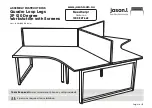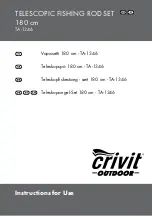Reviews:
No comments
Related manuals for Wellwash Versa

Isotemp
Brand: Fisher Scientific Pages: 42

NEUROSIGN V4
Brand: MAGSTIM Pages: 86

EVK-M8F-0-00
Brand: Ublox Pages: 22

Quadro A Legs 3P 120 Degree Workstation with...
Brand: Jason.L Pages: 10

Raven OMNiPOWER NL5000 G5
Brand: New Leader Pages: 268

NSG 4070C
Brand: Ametek Pages: 20

Breathe Easy
Brand: VibraPEP Pages: 2

TA-1346
Brand: Crivit Outdoor Pages: 20

EMN405PIR
Brand: REV Ritter Pages: 11

CA330
Brand: YOKOGAWA Pages: 2

AuraGain
Brand: Ambu Pages: 32

IOPac Standard
Brand: Reichert Pages: 28

IKN18 IPX4 PROFESSIONAL Lampion
Brand: N'oveen Pages: 8

rina 8304301012
Brand: LUTEC Pages: 11

Defender EBS 310
Brand: Zeagle Pages: 14

Power Strobe 1500 DMX
Brand: Stairville Pages: 44

PTS-ISU Series
Brand: Ohio Medical Pages: 78

Vista SD 101
Brand: S&C Pages: 27































